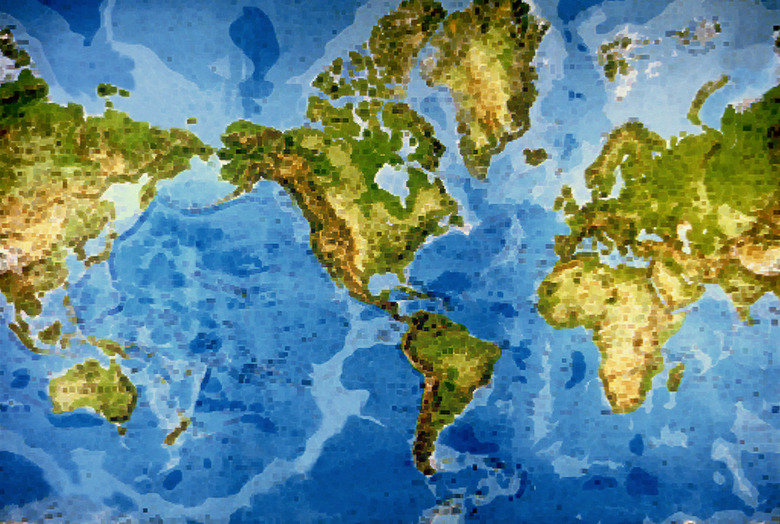How Do Ocean Currents Affect Inland Weather?
Weather conditions where people live are partially influenced by the surrounding land and surface features. Considering the size of ocean currents, it's no wonder that they affect the weather near the coast and farther inland to a significant degree. Ocean currents can affect the temperature and type of weather on nearby continents, especially when patterns of above- or below-normal ocean surface temperatures occur around the equator.
Ocean Currents: Background
Ocean Currents: Background
The ocean is a vast, continuous fluid. The actions of the wind, differences in temperature within the ocean and differences in density and salt concentration all act together to produce the great ocean currents that flow around the world. These currents are large and cyclical, taking the form of loops. In general, currents carry warm water from the equator north to higher latitudes, then cooler water south again to the equator.
Currents and Weather
Currents and Weather
Currents, being large masses of water at a given temperature, affect the temperature of the air above them. This effect carries over to nearby land areas when a current approaches the shore. For example, the Gulf Stream is a large current that passes near the northeastern area of the United States. The Gulf Stream carries warm water northward, so it keeps the temperature of the Northeast near the stream warmer than it would be otherwise. Currents can also affect precipitation — the Gulf Stream crosses the Atlantic in the north, then passes south near England. The air above the current is unstable, so it causes extra-wet weather for the British Isles.
ENSO Events
ENSO Events
Currents are also factors in El Nino Southern Oscillation (ENSO) events, when seawater in the tropics of the Pacific is either unusually warm (El Nino) or unusually cold (La Nina). This leads to patterns of altered rainfall in the tropics and all over the globe, as oceanic currents carry the unusual temperatures to other regions. During ENSO events, different areas of the Earth experience patterns of extra-wet or extra-dry weather.
Tropical Cyclone
Tropical Cyclone
The most dramatic storms in Earth's climate are the tropical cyclones. They take different names in different parts of the globe. For example, in the Atlantic, they are called hurricanes. Currents are a significant part of the formation and strength of tropical cyclones. These cyclones require warm water to form, and the warm water should be 5 degrees or more away from the equator. This ensures that Coriolis forces driven by the Earth's spin will produce rotational energy in the storm. Cyclones also require warm water to grow in strength, so currents like the Gulf Stream that carry warm water all the way up the Atlantic give the cyclones a way to stay strong until they make landfall in the Northeast.
Cite This Article
MLA
Gellert, Andrew. "How Do Ocean Currents Affect Inland Weather?" sciencing.com, https://www.sciencing.com/ocean-currents-affect-inland-weather-23265/. 24 April 2017.
APA
Gellert, Andrew. (2017, April 24). How Do Ocean Currents Affect Inland Weather?. sciencing.com. Retrieved from https://www.sciencing.com/ocean-currents-affect-inland-weather-23265/
Chicago
Gellert, Andrew. How Do Ocean Currents Affect Inland Weather? last modified March 24, 2022. https://www.sciencing.com/ocean-currents-affect-inland-weather-23265/
